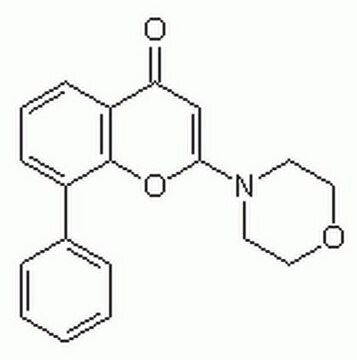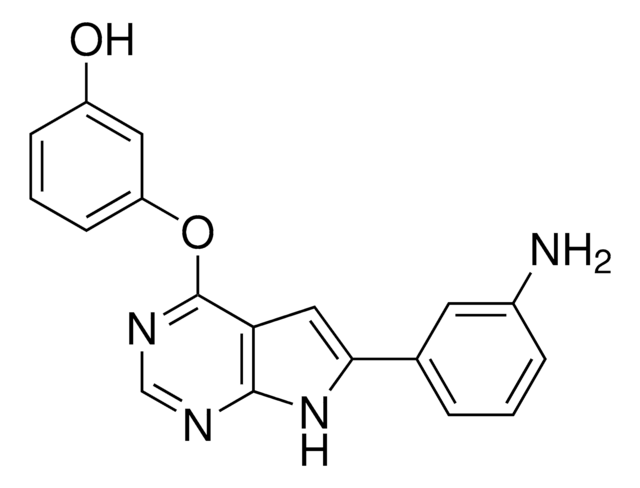553211
Rapamycin
≥95% (HPLC), solution, mTOR inhibitor, Calbiochem
Sinonimo/i:
InSolution Rapamycin, mTOR Inhibitor I
About This Item
Prodotti consigliati
product name
Rapamycin, Ready Made Solution, 2.5 mg/mL in DMSO (2.74 mM), from Streptomyces hygroscopicus
Livello qualitativo
Saggio
≥95% (HPLC)
Forma fisica
solution
Produttore/marchio commerciale
Calbiochem®
Condizioni di stoccaggio
desiccated (hygroscopic)
protect from light
Condizioni di spedizione
wet ice
Temperatura di conservazione
−20°C
Descrizione generale
Azioni biochim/fisiol
Mammalian target of rapamycin (mTOR)
Confezionamento
Attenzione
Stato fisico
Ricostituzione
Note legali
Codice della classe di stoccaggio
10 - Combustible liquids
Classe di pericolosità dell'acqua (WGK)
WGK 1
Punto d’infiammabilità (°F)
188.6 °F - closed cup - (Dimethylsulfoxide)
Punto d’infiammabilità (°C)
87 °C - closed cup - (Dimethylsulfoxide)
Certificati d'analisi (COA)
Cerca il Certificati d'analisi (COA) digitando il numero di lotto/batch corrispondente. I numeri di lotto o di batch sono stampati sull'etichetta dei prodotti dopo la parola ‘Lotto’ o ‘Batch’.
Possiedi già questo prodotto?
I documenti relativi ai prodotti acquistati recentemente sono disponibili nell’Archivio dei documenti.
I clienti hanno visto anche
Il team dei nostri ricercatori vanta grande esperienza in tutte le aree della ricerca quali Life Science, scienza dei materiali, sintesi chimica, cromatografia, discipline analitiche, ecc..
Contatta l'Assistenza Tecnica.











